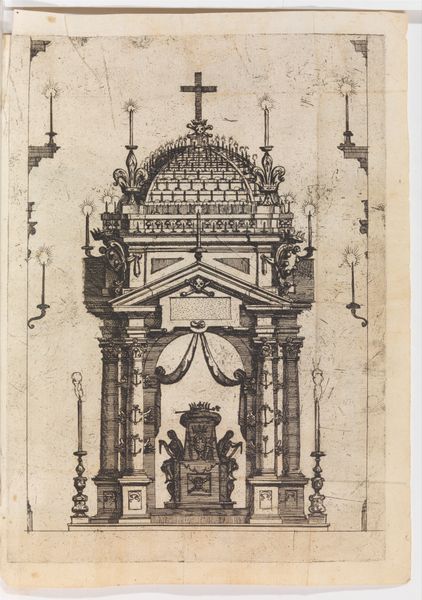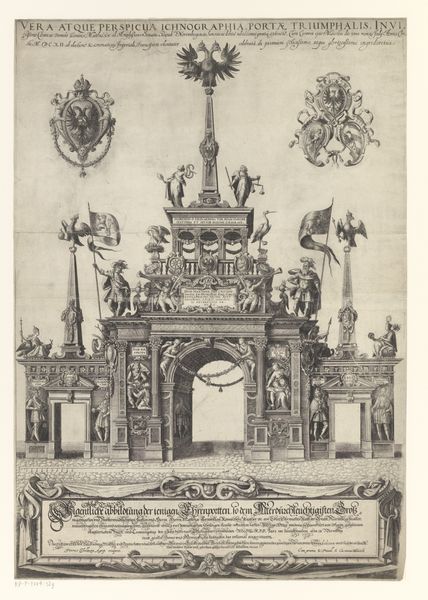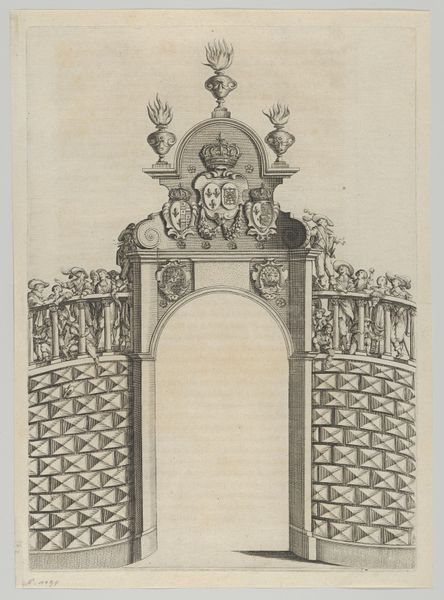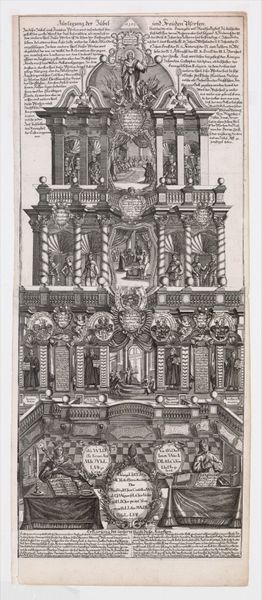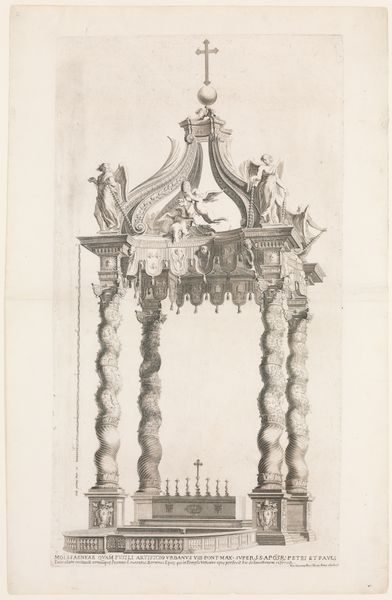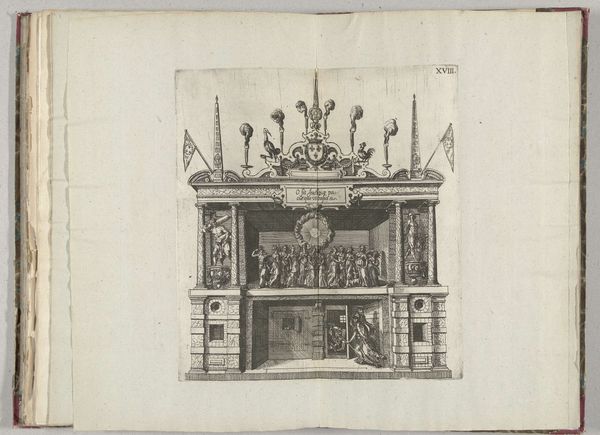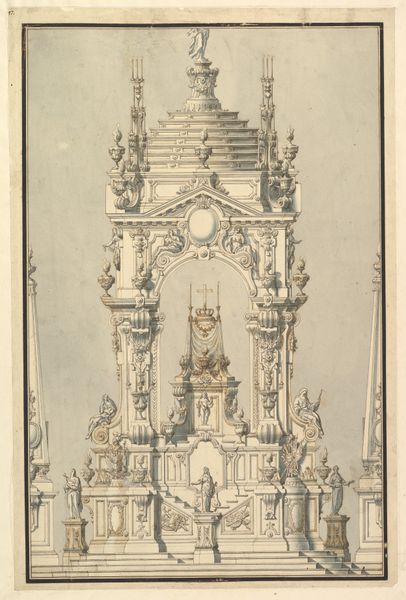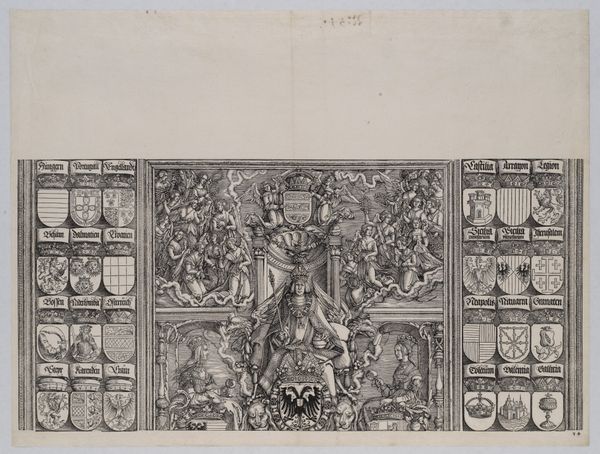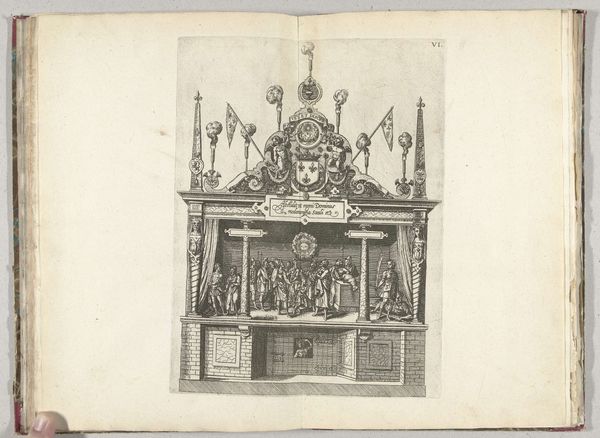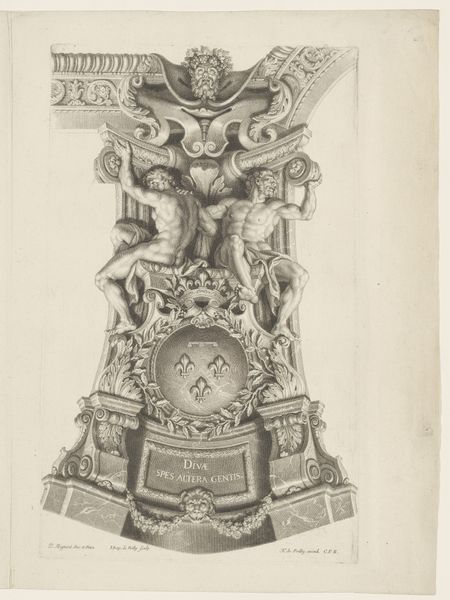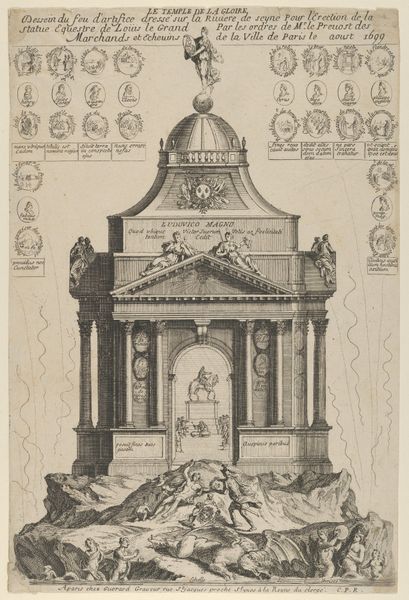
The Cupola and Imperial Crown on the Central Portal, from the Arch of Honor, proof, dated 1515, printed 1517-18 1515
0:00
0:00
drawing, print, engraving
#
drawing
# print
#
11_renaissance
#
geometric
#
history-painting
#
italian-renaissance
#
engraving
Dimensions: Sheet: 18 5/16 × 24 5/8 in. (46.5 × 62.6 cm)
Copyright: Public Domain
Curator: This intricate engraving, created by Hans Springinklee around 1515, is entitled "The Cupola and Imperial Crown on the Central Portal, from the Arch of Honor." Editor: The detail is astounding! The way the scales on the dome seem to shift and gleam, even in this monochromatic print… it feels opulent, celebratory. What was its intended purpose? Curator: This was originally conceived as part of a much larger series commissioned by Emperor Maximilian I. The entire "Arch of Honor" was intended to be an enormous printed monument celebrating his reign. It's fascinating to consider how these prints served as propaganda, carefully constructing and disseminating an image of imperial power. We need to see this as part of Maximilian's understanding of printed images. Editor: Propaganda, yes, but what craft! Look at the labor embedded in this single print – the meticulous detail in the architectural elements, the textures, and the sheer scale of ambition involved in a project like this! It elevates the printmaking process itself. How many artisans were involved in realizing this? Curator: Springinklee was one of several artists involved, working from designs by others, including Albrecht Dürer. The collaborative nature of the project speaks volumes about the artistic practices of the time, but it also challenges the idea of the lone genius artist, doesn't it? Editor: Absolutely. It brings into focus the labor and processes underpinning artistic production. But there's also this interplay between fine art and craft. Engraving wasn't always considered a ‘high art’ form, yet here it is, deployed to bolster imperial power. It makes you consider the different social strata operating around image-making, and the economics of it. Curator: And think about the layers of meaning embedded within this single section: the imperial crown atop the cupola, the figures adorning the archway—each element is carefully chosen to reinforce Maximilian’s authority and legacy, his place within a complex tapestry of political power and historical narrative. Editor: Examining this print from a materialist perspective forces us to question the value ascribed to artistic skill versus the political agenda it serves. The Arch is really beautiful but to whose benefit was its creation. Curator: Indeed. It shows how deeply art is embedded in broader systems of power and social meaning. Editor: A reminder that even the most exquisite craftsmanship can be bound up in the dynamics of power, labour, and exploitation.
Comments
No comments
Be the first to comment and join the conversation on the ultimate creative platform.
